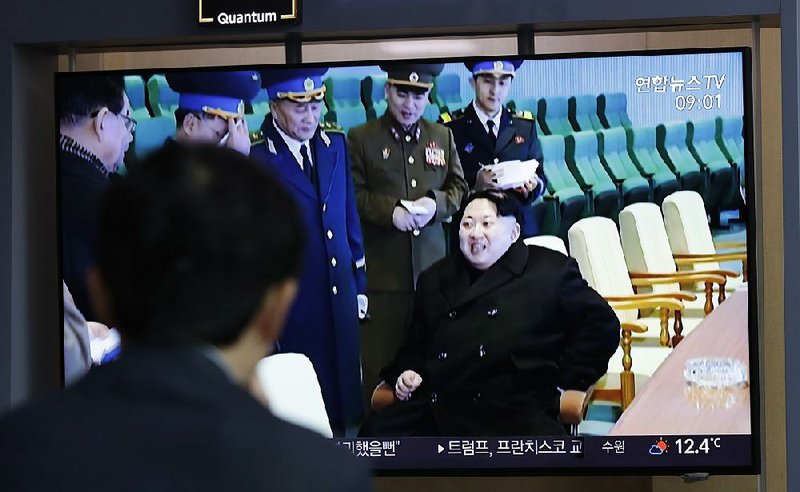WASHINGTON -- North Korea announced that it test-fired a new tactical guided weapon Wednesday to increase the "combat power" of the country's military.
The state-run Korean Central News Agency reported today that the country's leader, Kim Jong Un, oversaw the firing of the weapon by the Academy of Defense Science.
It was not immediately clear what type of weapon was fired, but the move would mark the first weapons test since President Donald Trump's February summit with Kim in Vietnam. That meeting ended early after the sides couldn't reach an agreement in denuclearization talks.
The White House said it was aware of the report and had no comment. The Pentagon also said it was aware but had no information to provide.
Kim said "the development of the weapon system serves as an event of very weighty significance in increasing the combat power of the People's Army," the Korean Central News Agency reported.
However, it likely was not a banned ballistic missile test that would jeopardize diplomatic talks meant to provide North Korea with concessions in return for disarmament. A South Korean analyst said the North's media report indicates that it could have been a test of a new type of cruise missile.
One of the lower-level officials mentioned in the North's report on the test, Pak Jong Chon, is known as an artillery official, offering another possible clue of what was fired.
This is the first known time Kim has observed the testing of a newly developed weapon system since November, when North Korean media said he observed the successful test of an unspecified "newly developed ultramodern tactical weapon."
Some observers have been expecting North Korea to orchestrate "low-level provocations," such as artillery or short-range missile tests, to register its anger over the way the nuclear negotiations are going.
Analysts said the description of a tactical weapon appeared to rule out a long-range weapon.
"Not a ballistic missile. Looks like they are working on anti-aircraft capabilities with the last test and this one," said Victor Cha, a North Korea expert at Georgetown University. "It shows that North Korea is going on, business as usual, after the failed Hanoi summit."
Bruce Klingner of the Heritage Foundation noted North Korea's similar statement in November but said experts still don't know what tactical system was tested.
"However, the U.S. did not detect a missile launch either time, so it must be a short-range system, perhaps an artillery system such as a multiple rocket launcher or an anti-tank guided missile," he said. "Pundits and policymakers should refrain from assuming this is a signal of Pyongyang deliberately ratcheting up of tensions or closing the door on negotiations."
North Korea has suspended nuclear and long-range rocket tests as it tries to negotiate a deal with the U.S. But there have also been reports of new activity at a North Korean missile research center and long-range rocket site where Pyongyang is believed to build missiles that could target the U.S. mainland.
In addition, North Korean media said Wednesday that Kim guided a flight drill of combat pilots from an air force and anti-aircraft unit responsible for defending the capital, Pyongyang, from an attack.
During a speech in front of parliament Friday, Kim set the year's end as a deadline for the U.S. to offer mutually acceptable terms for an agreement.
Information for this article was contributed by John Hudson of The Washington Post; and by Foster Klug, Kim Tong-Hyung and Hyung-jin Kim of The Associated Press.
A Section on 04/18/2019
